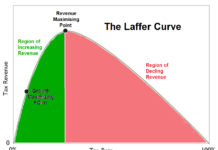In my last article, I discussed something called the new racial ideology, and the idea that racism has become an inescapable concept. This is a fancy way of describing how the left has redefined the word racism in much the same way they have other words. The definition of fascism, for example, now reflects a right-wing system of government. This is a vast misinterpretation of the political scale as traditionally speaking, the further right you move, the less government authority there is. Fascism may be to the right of full-blown Communism but is still far left of center. Racism has been redefined in much the same way. The new racial ideology, and terms like colorblindness, define racial bigotry in a way that aligns with conservative values. Concepts like individualism, achievement, and equality of opportunity are considered racist. In fact, looking at any issue from a perspective that fails to acknowledge racial differences is now the new form of racism. For example, William Tate argues in his article, Toward a Critical Race Theory of Education, that race should be the driving consideration in all societal reforms, and that taking a colorblind approach prevents these differences from being acknowledged.
The left has been taking a so-called, scientific approach to the study of racism for decades. Their research is driven by a bias that racism is endemic in the everyday way that American society functions. Thousands of papers are published in academic journals which purport to show the racist attitudes of the American people, and all this research is guided by one of the basic tenets of Critical Race Theory, a commitment to social justice. The book Research Methods for Social Justice and Equity in Education, for example, suggests that researchers should not start their research from a neutral position, but from one where they are active participants against racism and oppression. This mindset makes it impossible for them to be objective because they are starting from the preconceived notion that they are social justice warriors and that racism exists everywhere.
People tend to ignore the significance of scholarly research by blowing it off as academic nonsense. While it certainly is nonsense in many ways, it shouldn’t be discarded so quickly because it frames the debate and sets the course for future inquiry. It also establishes the parameters by which students can do research. Anyone who has been in college knows that writing papers require the citation of legitimate academic journals. This is an area that the left has firm control of and has for decades. In other words, the information students are exposed to in higher education, especially in the social sciences, is very left-leaning.
While Critical Race Theory has made headlines in recent years, few Americans realize the extent to which it has been influencing research, and how long scholarly work into racism has been going on. Racism has become an inescapable concept not only because of the new racial ideology but because it is something that they are attempting to put into the psychological framework of white people. For example, the paper Exploring the Psychology of White Racism Through Naturalistic Inquiry attempts to define the psychological dispositions that white people have towards “white racism” from a cognitive, affective and behavioral approach. This paper is a perfect example of how terms can be redefined, and perceptions can be created, pertaining to how different groups of people can be described in terms of their attitudes towards people of different races. This paper was published in 1999 in the Journal of Counseling and Development, and according to its authors, is the culmination of sixteen years of research. What does this mean? It means that the field of counseling is tainted by the perspectives of Critical Race researchers.
This paper is great example of how the researchers begin their work from the perspective that they are active participants in the fight against racism. For example, the term naturalistic inquiry itself means operating from an assumption that there are “multiple realities that are mentally constructed by the research participants” (D’Andrea and Daniels, 1999), and when using the naturalistic inquiry approach, researchers become participant-observers acting within the context that the research is being done. That sounds like the description given in the book Research Methods for Social Justice and Equity in Education.
This paper is interesting in the sense that it identifies five psychological dispositions of white people, and their attitudes towards white racism, along with three characteristics of each disposition. The five psychological dispositions are as follows – affective impulsiveness, rational disposition, the liberal disposition, the principled and principled activist dispositions. It is important to understand that these dispositions define the racist attitudes of each. All white people, in other words, are considered racist. These dispositions just define the levels, if you will, of white racism. Affective impulsiveness, for example, is straight forwards and in some ways, makes sense. It is defined as the inability to hide one’s racist attitudes. From a behavioral perspective, an individual falling in this category generally hates people of another color simply because they are another color. The rational disposition is defined as an individual who acknowledges racial differences and America’s racist past, yet their behavior is still motivated by racial stereotypes. The example used in this paper describes an individual who would not buy a home in a racially integrated neighborhood out of fear that property values would drop.
The next disposition is simply known as the liberal disposition and is characterized by the ability of individuals to think more abstractly about racism and human rights, and the cognitive ability to think “more accurately” (D’Andrea and Daniels, 1999) about the perspectives of other people. At the same time, people falling under this category are characterized as apathetic towards the realities of racism instead of being angered and motivated to do the necessary work to change it. This is a common theme in Critical Race Theory as it is believed that change would require a radical reorganization of society, and that simply making white people aware of their privilege is not enough. If you notice, each disposition becomes a little less racist and more left-leaning in their worldviews.
The principled disposition, for example, denotes the idea of an advanced cognitive ability to see how white racism is a hidden, structural phenomenon that systematically discriminates against people of color. According to the authors, people of this disposition are “relativistic thinkers” who understand that culture and behavior is typically formed through the social contexts in which different people have lived. People of the principled disposition have an empathetic view towards others and have developed what is referred to as a “justice and caring perspective in the way they think about and act on the problem of White racism” (D’Andrea and Daniels, 1999).
Finally, we have the principled activist disposition. People of this disposition make up less than one percent of white people in America and are defined in much the same way as those in the principled disposition but are better able to “understand the types of individual, institutional, and cultural changes that need to occur to successfully ameliorate this social pathology” (D’Andrea and Daniels, 1999) the left refers to as institutional racism. D’Andrea and Daniels (1999) also state that white people operating from this disposition exhibit a much greater ability to see the human potential in alleviating white racism in the United States, than people in the other categories. This is because people in this disposition are the ideal leftists who see racism behind every corner and are working to fundamentally transform America into a socialist state.
Again, many people blow off these kinds of papers as academic nonsense. It is nonsense from the perspective that the research is done with a pre-existing bias, and that the researchers themselves believe racism exists everywhere in the U.S. What should be noted, however, is the fact that this paper was written in 1999 after sixteen years of research. Research mind you, that appears credible to the gullible college mind who enters higher academia with a perspective already tainted with a left-leaning worldview. The takeaway from this paper is that the last disposition represents a higher level of morality, and a greater capacity to think about the effects of white racism on minorities in America. If you are a college student who believes in the credentials of higher education, you will be apt to fall into this line of thinking simply for the sake of being accepted by your professors and appearing compassionate and educated. It has been twenty-three years since this paper was published. It would be difficult to argue that the premise behind it has not played a major role in shaping the perspectives of college students. Society has been inundated with the concepts of white privilege and institutionalized racism, and there is no doubt that left-leaning social justice warriors prop themselves up on a higher moral pedestal for calling the rest of us racist.
To learn more about CRT check out my latest book. Now available in paperback.

Also, check out Without a Shot Indeed: Inducing Compliance to Tyranny Through Conditioning and Persuasion.


























